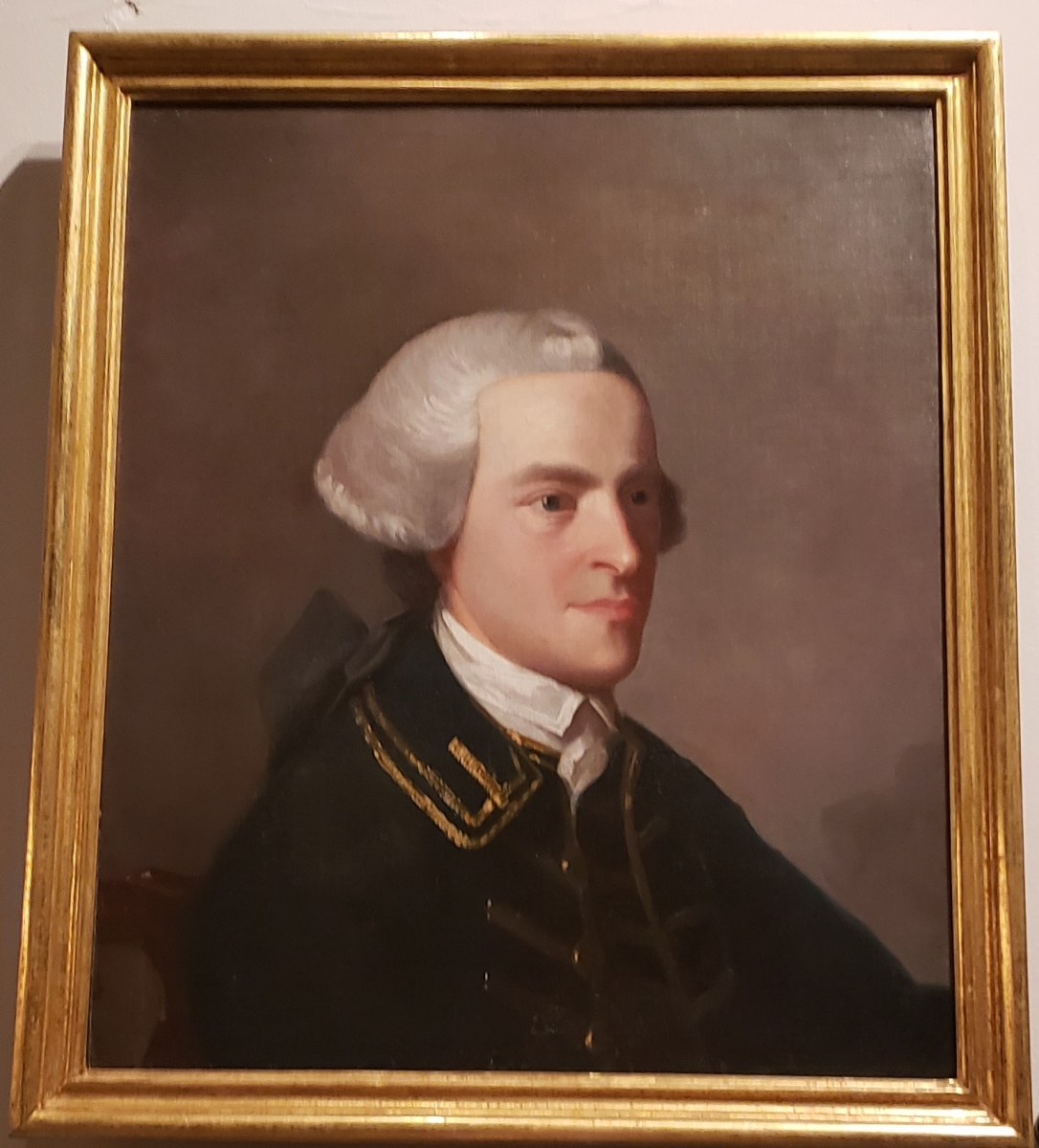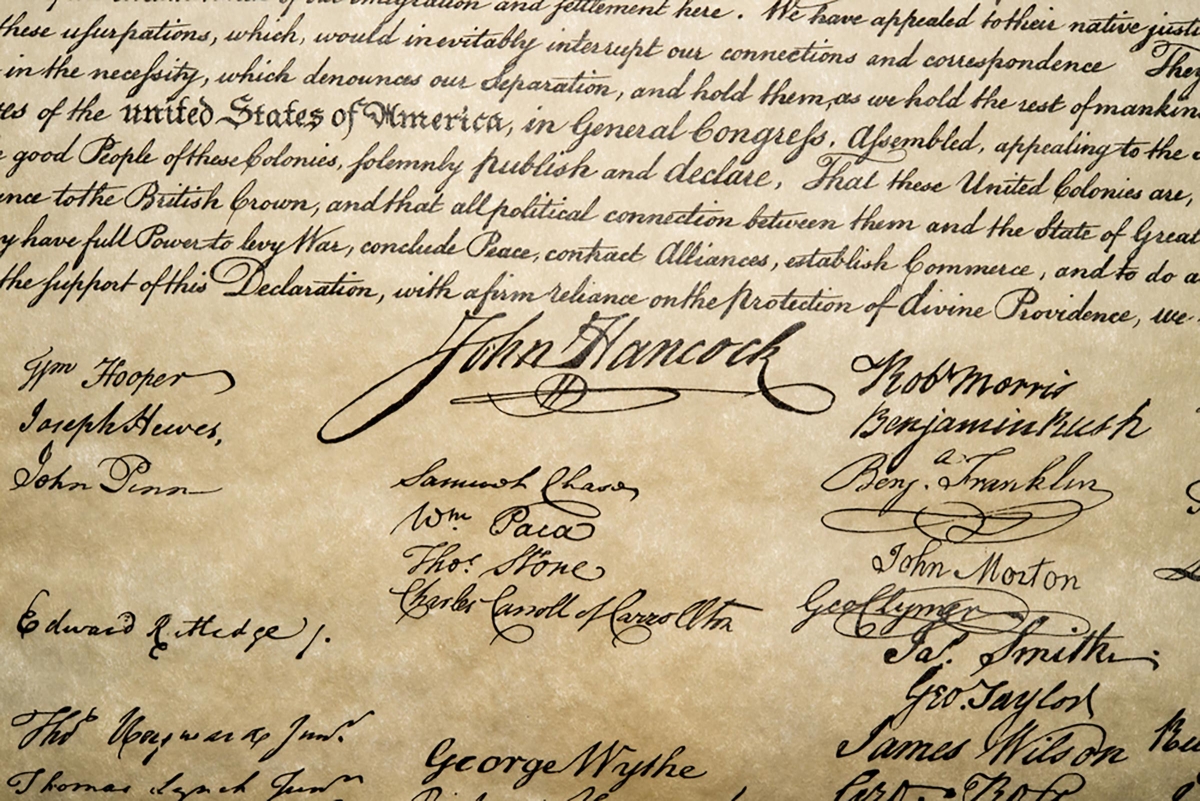Related Posts
- Buy Tickets for The Constitutional Walking Tour of Philadelphia – See 20+ Sites on a Primary Overview of Independence Park, including the Liberty Bell and Independence Hall
- Independence Hall
- Signers' Garden
- Signers' Walk
- Second Continental Congress
Birth: January 23, 1737
Death: October 8, 1793 (aged 56)
Colony: Massachusetts
Occupation: Merchant, Politician
Significance: Signed The Declaration of Independence (at the age of 39); served as the President of the Continental Congress (1775-1777, 1785-1786); served in the Massachusetts House of Representatives (1778-1780); and served as the Governor of Massachusetts (1780-1785, 1787-1793)

John Hancock was a Founding Father of the United States of America. Hancock was born in Massachusetts to a line of clergymen as both his father and grandfather were priests. His father actually baptized fellow patriot John Adams, who grew up nearby. Hancock went to live with his aunt and uncle, Thomas Hancock, who was a wealthy merchant, after his father’s death when Hancock was 7 years old. Hancock attended Boston Latin and then Harvard College, graduating in 1754. Hancock then went to work for Thomas Hancock, traveling to and living in London for a time to further the interests of his uncle’s merchant company, House of Hancock. By 1763, Hancock’s uncle was in poor health, and John was made a partner in the company and took control of the business. Upon the death of his uncle, Hancock became one of the wealthiest men in the Colonies.
Early Political Career
In 1765, Hancock was elected as one of Boston’s Selectmen, and quickly became a leading figure in Boston’s fight against the Stamp Act which was passed shortly after Hancock’s election. Hancock believed that the Stamp Act was an injustice, but initially counseled for restraint. As time went on though, Hancock drifted further to the side of the protesters and eventually endorsed and participated in a boycott of British goods. After the British relented and repealed the Stamp Act, Hancock received considerable credit for his advocacy and was elected to the Massachusetts House of Representatives in 1766.
Hancock also developed a friendship with Samuel Adams during this time. Adams, a founder of the Sons of Liberty, was well known for his strong stances against the British and became a mentor to Hancock who was roughly 15 years younger than Adams. As the next wave of British taxes hit American shores, Hancock wasted no time in coming down strongly against them and the overreach by Parliament in even believing that they had the right to pass such laws.
Tensions however continued to rise in Boston, and after the Boston Massacre, Hancock led the charge in calling for bringing the culpable soldiers to justice and the removal of the standing army in Boston. While the soldiers were eventually cleared of most criminal charges, Hancock was successful in pushing the military out of Boston. The victory was short lived however, and the Boston Tea Party and the resulting British response brought tensions in Boston to a new high.
The American Revolution
The tensions between British soldiers and Bostonians finally reached a boiling point on April 19, 1775 when the Battles of Lexington and Concord broke out. It was initially unclear what would happen in the aftermath of the battles, and the British initially offered a full pardon to anyone who surrendered, with the exception of Samuel Adams and John Hancock. But no one surrendered to the British, and Hancock traveled south to Philadelphia where he had been elected to serve in the Second Continental Congress.
At the Second Continental Congress, Hancock quickly became a central figure when the President of the Assembly, Peyton Randolph had to excuse himself from the proceedings due to poor health, and Hancock was elected as his replacement. As President of the Continental Congress, Hancock pushed for Independence, voted for Independence and signed The Declaration of Independence.
Hancock has since become famous for his signature on The Declaration of Independence, which is much larger and ornate than the other signatures. Hancock is famously said to have signed it so large so that “King George could read if without putting on his spectacles.” The reason why Hancock’s signature attracts the prominence that it does is likely more due to Hancock’s position as the President of the Second Continental Congress.

The famous, signed copy of The Declaration of Independence that bears his signature, was actually not signed by most delegates until August 2, 1776. By that point, Hancock had really earned his large signature as the original broadsheet copies of The Declaration of Independence that were distributed throughout America contained only one name, John Hancock, as President. In other words, in the earliest, riskiest stages of the war, it was Hancock’s name and his alone that was printed on The Declaration of Independence, a document that the British viewed as highly treasonous.
In 1777, Hancock left the Continental Congress for Massachusetts but returned to the Continental Congress again for a short time in 1778. During this time, Hancock was able to sign the Articles of Confederation, America’s first attempt at a centralized government, prior to the Constitution of the United States being written.
After leaving the Continental Congress again in 1778, Hancock joined the Massachusetts Militia and was eventually given command of a few thousand soldiers. But Hancock did not perform well and was eventually stripped of his command. Back in Massachusetts, Hancock was elected once again to the Massachusetts House of Representatives in 1778. Then in 1780, Hancock was elected Governor of Massachusetts winning with over 90% of the vote in a landslide. Hancock continued to win re-election as Governor until he was forced to resign in 1785 due to failing health. After a recovery, Hancock was once again elected Governor of Massachusetts in 1787 and continued to hold the position until his death in 1793.
John Hancock in Philadelphia
Hancock arrived in Philadelphia for the first time in 1775 as a delegate to the Second Continental Congress, during which time Hancock worked at Independence Hall, and he signed The Declaration of Independence.
A plaque commemorating Hancock for signing The Declaration of Independence can be found on Signers' Walk on the 600 block of Chestnut Street (between 5th and 6th Streets). Signers' Garden pays tribute to the Founding Fathers, including those such as Hancock who signed The Declaration of Independence. Independence Hall, Signers' Walk, and Signers' Garden are all stops visited along The Constitutional Walking Tour!



